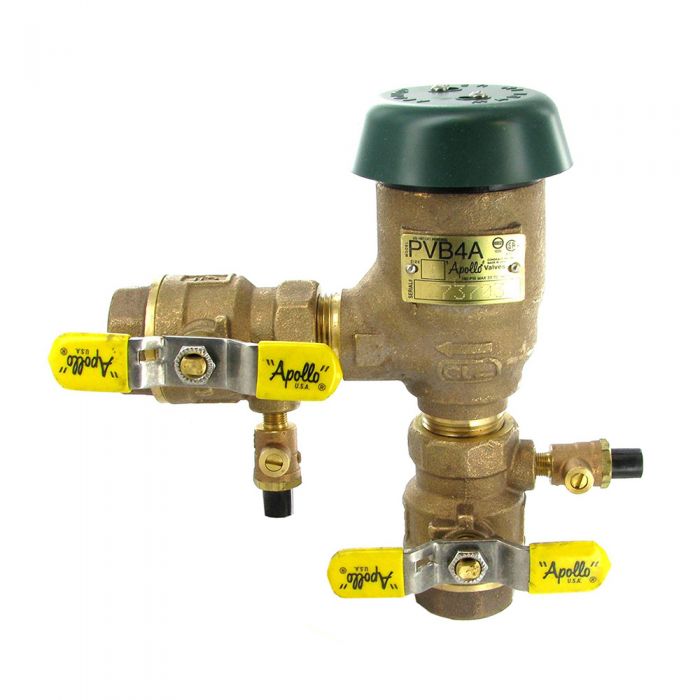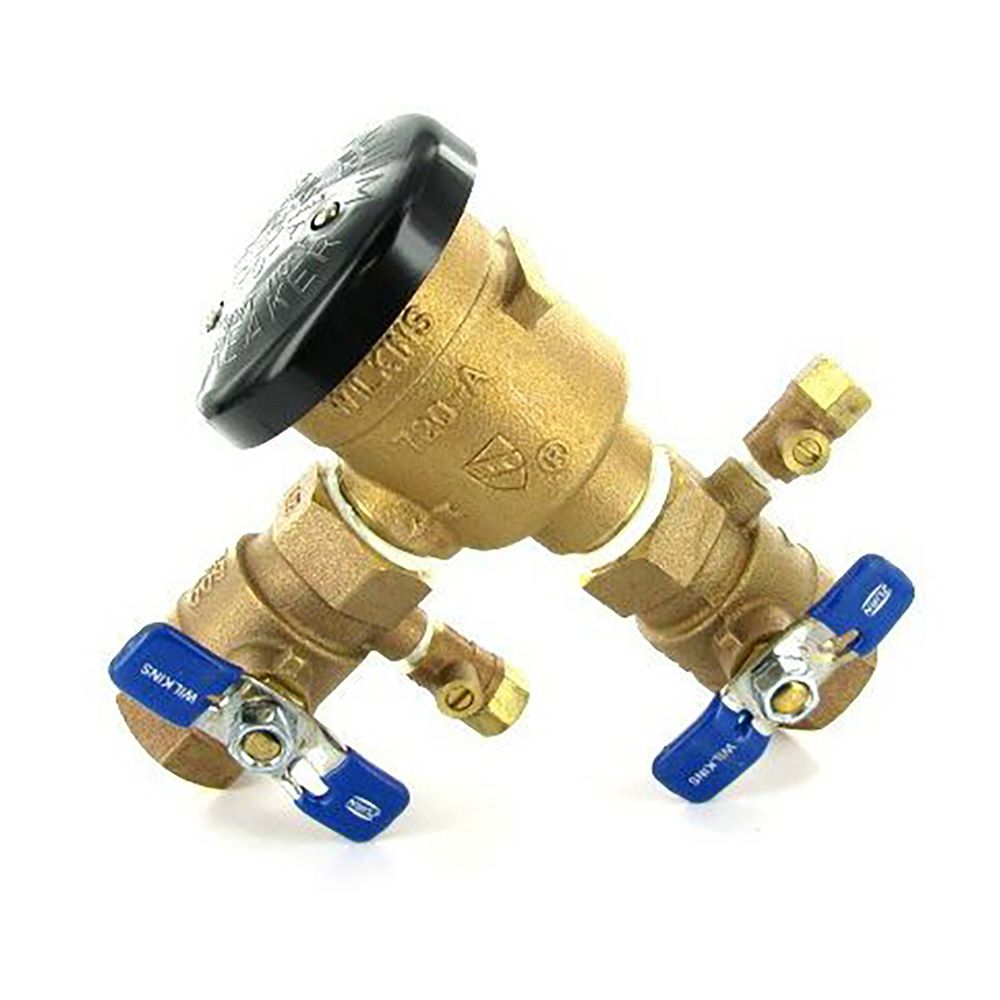The Importance of Backflow Preventers:
If you work with irrigation systems, you need to understand how backflow devices protect our water supply. They are more than just fittings on a system of piping to deliver water.
Irrigation system backflow preventers protect our drinking water, save lives and prevent illness. By understanding the function and purpose of backflow preventers, you will be able to comply with local codes.
The image below shows an example of a pressure vacuum breaker. This is the 1″ Conbraco 4A-500 Freeze Resistant Backflow Preventer.

A Backflow Contamination Incident
You may not realize it, but water from irrigation systems can contaminate our drinking water supply. The Los Angeles Times reported on October 31, 1997 irrigation backflow incidents do happen.
“Drinking water in the system serving two schools and as many as 1,600 homes in Calabasas hillside neighborhoods were contaminated with treated sewage water intended for irrigation after a plumber working on a landscaping job mistakenly crossed two pipes.”
The contaminated water made several people ill. Authorities warned residents to not drink from their faucets until workers could flush and test the water lines. This article will introduce you to cross-connection and backflow prevention. This is intended to help keep you within the law and outside the courtroom.
The Safe Drinking Water Act (SWDA) of 1974 established a national program to ensure the quality of America’s drinking water. It included a Federal mandate that the local water district provides safe drinking water. It also authorized the Environmental Protection Agency (EPA) to set standards for contaminants in public water systems.
The image below shows the Wilkins 720A Pressure Vacuum Breaker Assembly 1″ FPT backflow preventer:

Become Familiar With Local Codes For Backflow Prevention:
State and local codes provide requirements for ensuring that the water distribution system provides safe water. Local codes vary, but most cities have guidelines on the type of backflow preventers to be used within their jurisdiction. You should become familiar with your local codes as they relate to irrigation systems.
Basic Terms
First, let’s review some basic terms. Backflow devices aka backflow preventers are special valves that protect our potable (drinking) water supply from pollutants or contaminants. They do this by preventing backflow from cross-connections.
- Backflow is the unwanted reverse flow of any liquid, solid, or gas in a piping system. In an irrigation application, this means that water within the irrigation system may find its way back into the potable water system during a backflow incident.
- Cross Connections are the link or channel connecting a source of pollution with a potable water supply. Therefore, the irrigation piping system may create a cross-connection between the potential contaminants and the potable water supply.
- A pollutant is a substance that would affect the color or odor of the water, but not pose a health hazard. Non-health hazard applications are applications in which pollutants could potentially enter the potable water supply.
- A contaminant is a substance that would cause illness or death if ingested. Contaminants are by definition health hazards. For example, water in the irrigation system could come in contact with fertilizers used on the lawn, waste from animals, pesticides used in the surrounding landscape, or muddy water. Contaminated water, which collects around a submerged sprinkler head or chemicals in a chemigation system, could be drawn into the irrigation system. Therefore, most codes consider irrigation systems health hazard applications. Installing the appropriate type of backflow preventer ensures these potential contaminants do not find their way back into the potable water supply.
Two Basic Types of Backflow: Backsiphonage and Backpressure
Backsiphonage:
Back siphonage is when negative pressure or loss of pressure siphons or sucks the water from the irrigation system into the potable water supply. For example, a hand-held pesticide sprayer is connected to a garden hose. If negative pressure occurs, such as a break in the mainline water supply, the contents of the pesticide sprayer could be siphoned out of the container. The hazardous chemicals could then travel down the line into the potable water supply and cause serious illness or death. If the garden hose had a backflow preventer (hose bib type of vacuum breaker in this application) at the point of use, the contaminant wouldn’t enter the main water supply.
Backpressure:
Backpressure is another common way contaminants enter the potable water supply. This occurs when the pressure in the system is greater than the supply pressure. In an irrigation system, this can occur when an auxiliary pump, which boosts the pressure in the irrigation system, has greater pressure than the city water supply. Then the booster pump can “push” the potentially contaminated water back into the potable water supply. However, if the proper backflow preventer is installed at the point where the irrigation system and the city water supply meet, our drinking water will be protected.
Purchasing A Backflow Preventer:
There are several different types of backflow preventers available on the market today. Some of the new designs have superior flow characteristics, shorter lay lengths, and are easier to service. Based on the application, system layout, and type of hazard, local codes may vary on which type of backflow preventer should be installed for a particular application.
Consult your local codes or authority having jurisdiction to determine which devices are approved in your area for specific applications. Several organizations and agencies have established guidelines for the design, manufacture, and performance of backflow preventers.
Some organizations and agencies involved with the approval and/or certification of devices include the Foundation for Cross-Connection Control and Hydraulic Research at the University of Southern California, the American Society of Sanitary Engineers, the American Water Works Association, and the Canadian Standards Association.



























